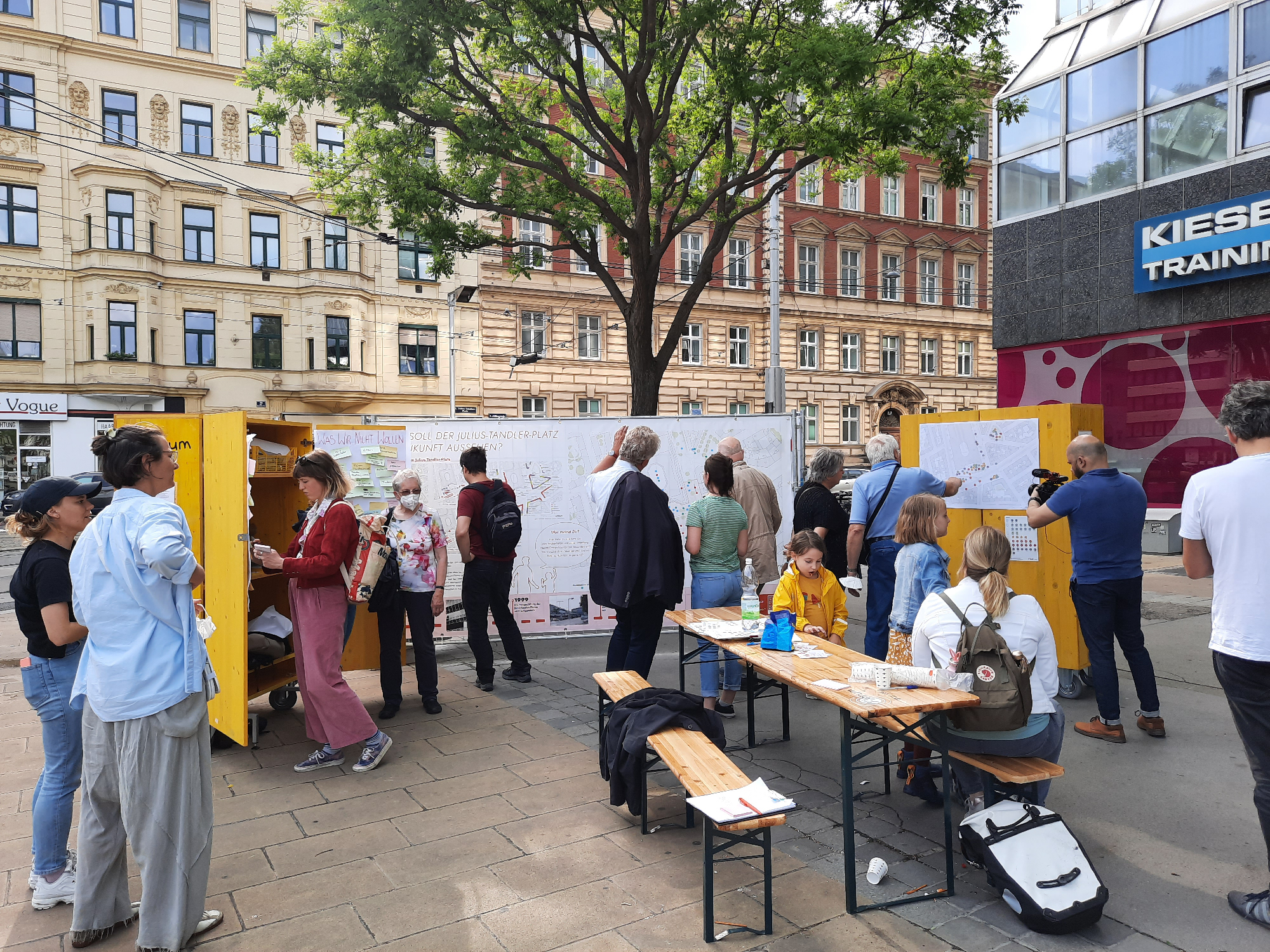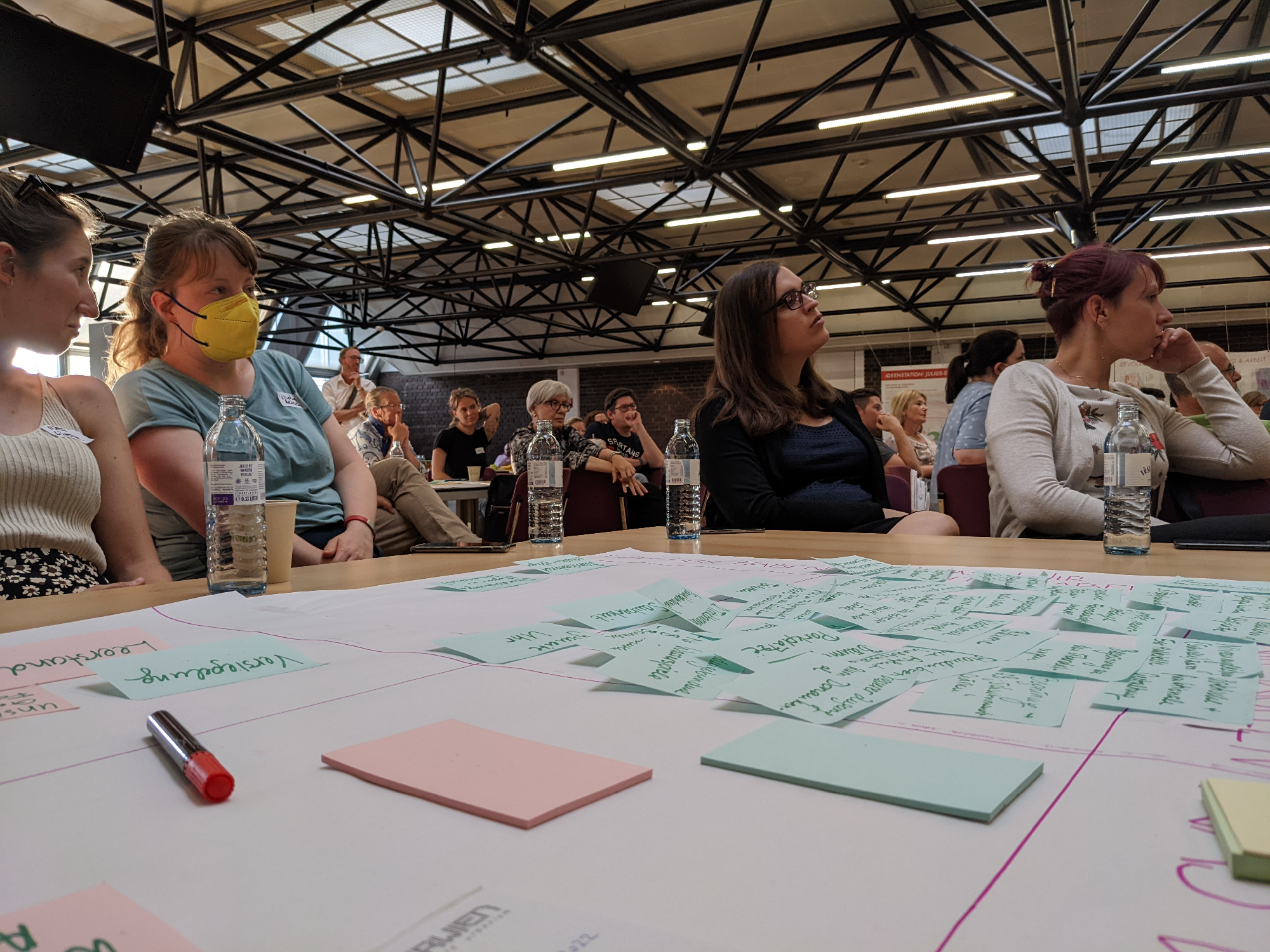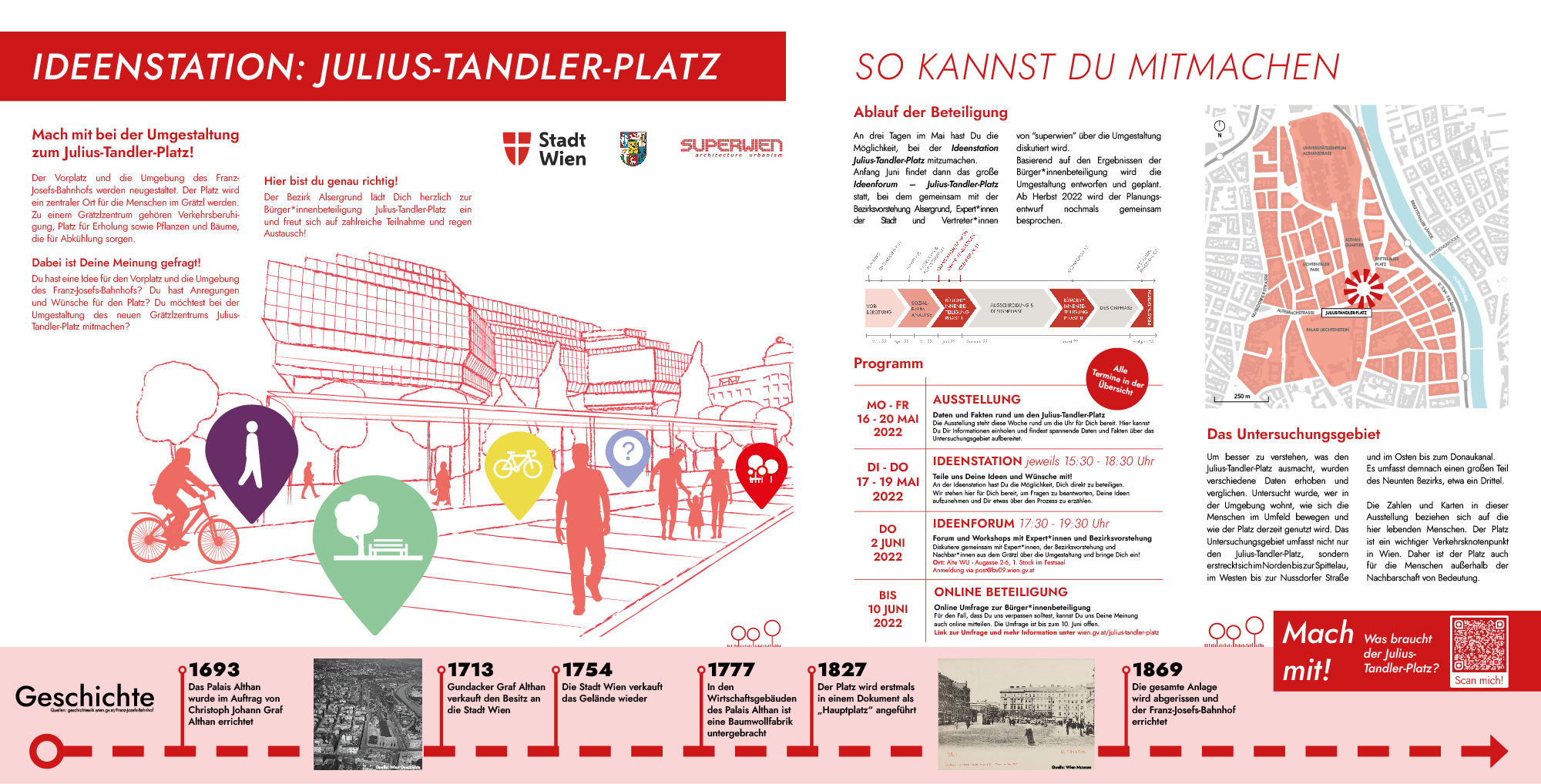Julius-Tandler-Platz Neu!
Sozialraumanalyse und Beteiligungsprozess zur Umgestaltung des Julius-Tandler-Platzes
Year
2022
Status
Ongoing
Location
Vienna | Austria
Client
MA19 – Architektur und Stadtgestaltung
Der Julius-Tandler-Platz ist ein zentraler Platz am Alsergrund mit vielzähligen Funktionen und einer diversen Nutzungsstruktur. Als Vorplatz des Franz-Josefs-Bahnhofs stellt er für viele Verkehrsteilnehmer*innen einen Knotenpunkt dar, wobei er nicht nur als Umsteigeplatz für den öffentlichen Verkehr fungiert, sondern auch an einer wichtigen Achse für den motorisierten und aktiven Individualverkehr liegt. Zudem befinden sich am Platz verschiedene Einkaufsmöglichkeiten und Gastronomieangebote.
Aufgrund dieser Rahmenbedingungen wird der Platz von vielen verschiedenen Nutzer*innengruppen, mit unterschiedlichen Bedürfnissen, in Anspruch genommen. Die Beteiligung der betroffenen Bürger*innen ist ein zentrales Element im Prozess der Umgestaltung des Julius-Tandler-Platzes und geschieht in zwei zeitlich getrennten Beteiligungsphasen.
Ziel war es, den Beteiligungsprozess so zu konzipieren, dass diverse Bevölkerungsgruppen erreicht werden können. In der ersten Beteiligungsphase wurden dazu an mehreren Tagen und zu unterschiedlichen Tageszeiten interventionistische Vor-Ort-Beteiligungsformate, ein Bürger*innenforum, spezifische Fokusgruppenworkshops und auch ein begleitender Fragebogen durchgeführt. Das Ganze wurde von einer interaktiven Bauzaun-Ausstellung begleitet, die eine Woche lang im öffentlichen Raum aufgestellt war und Interessierte über das Projekt und den Planungsraum sowie die eigenen Möglichkeiten zur Beteiligung informierte. Bei einer dreitägigen Placemaking-Aktion konnten Nutzer*innen direkt vor Ort mit dem Team in Kontakt treten, ihre Wünsche und Anregungen äußern und sich mithilfe unterschiedlicher Beteiligungsformate einbringen. Dadurch wurde nicht nur die Beteiligung am Prozess, sondern auch der Austausch unter unterschiedlichen Nutzer*innengruppen gefördert.
Die so gesammelten Ergebnisse zeigten den Wunsch nach einem urbanen, grünen Zentrum für den neunten Bezirk auf, das Möglichkeiten zum Treffen und Aufenthalten, aber auch genug Platz für Aktivitäten sowie temporäre Veranstaltungen bietet. Wichtiges Thema war auch die Neuorganisation der Verkehrssituation, mit einer deutlichen Verbesserung der Fuß- und Rad-Infrastruktur. Die Ergebnisse wurden in einem ausführlichen Bericht detailliert geschildert und in begleitenden Karten dargestellt.
Sobald ein Vorentwurd vorliegt, soll dieser in einer zweiten Beteilgungsphase nochmals öffentlich mit der Bevölkerung diskutiert werden. Auf Basis dieses Feedbacks wird der Entwurf überarbeitet und vertieft, bevor der finale Entwurf präsentiert wird.
Eng
Participatory Process for the Redesign of Julius-Tandler-Platz







